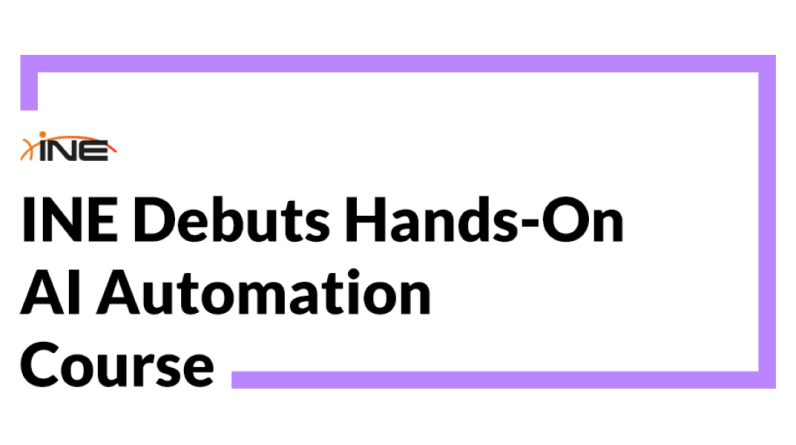
The summit, held June 4 at Mid-Pacific Institute, included a session called “The Future of Work.” Participants in the session were:
- Brent Grimes, founder and CEO, Reef.ai
- Megan Hall, founder of segment X
- Yolanda Lau, founding board member, Hawaii Center for AI
- Gavin Steele, director of product management, altres
- Moderator: Ian Kitajima, president, PICHTR (Pacific International Center for High Technology Research)
Kitajima: These panelists have been using AI, building applications and launching businesses. I think it will be fascinating to hear from folks on the front line, implementing AI, finding the opportunities and challenges that you will also face as you go forward in this rapidly changing future. My first question: What is the future of AI?
Grimes: In the medium to long term, it’s going to be very difficult to imagine what life was like before. AI will be a default assumption: We’re going to operate kind of seamlessly around AI. In the short term, it’s going to be much more uneven. Think about an analogy: In the late 1990s and early 2000s, the internet was becoming popular, there were a lot of businesses building on the internet. But there were also lots of existing businesses dependent on old ways of doing business.
The first wave of the internet was establishing the businesses and adapting to capabilities, but preserving what was known and realistic. That’s an analogy for AI in the short term. There’s going to be things that seem like magic appearing regularly. And it’s going to move very fast.
But the way that it works its way into our lives, it’s going to be much harder. A great example is automated home technology. You can already tell Alexa to turn your lights on or off. AI will be able to work with your home automation, but somebody has to build the scaffolding between the AI and the home systems to get them to work well. In the future, there’s going to be some company that’s invented from the ground up to create AI-enabled home automation that works very differently than adapting to today’s world. So I think there’s going to be a series of incremental changes that will add to a very different way of living 10 years from now.
Hall: I already have a hard time remembering what life was like just two years ago – before everything changed with ChatGPT. And I think that one of the big wow moments is AI allows computers to act more like a human and allows humans to act like a computer. People may say, “I’m not good with computers, so I’m not going to like AI.” But now computers are adapting to those people, and they might learn to love computers. And I think there will be a lot less clunky software in the future, because AI will make it easier for people to interact with software.
Steele: I think we’ll see a hyper-personalization of everything from education to work. As a parent, I want my child to have an education that suits her particular needs and strengths. I think schools can use AI to provide that personalized touch, whether it’s lesson planning or assessing students’ work.
It can get candidates in front of jobs that match their skill set and what they want to achieve and then personalize their tools so they can have a more meaningful impact at work.
Lau: AI will be incorporated into everything and that will accelerate the rate of change. AI will enable computer vision, enable robotics, hopefully solve climate change faster, improve synthetic biology and quantum computing.
Ian Kitajima: The moderator posed questions about AI in the workplace, useful tools for today and AI’s role in the digital divide. | Photos: Aaron Yoshino
Are We Creating a Greater Digital Divide?
Kitajima: What about equity? This group is probably the 1% really involved with artificial intelligence. You’re making the investment. Are we creating a greater digital divide?
Hall: ChatGPT and other AI tools are free, but if you are not aware they exist, you will not benefit from them. So there needs to be that awareness.
Lau: That’s why we started the Hawaii Center for AI – to increase the responsible, ethical, beneficial use of AI in our state. Not just to lift up individual people but to lift up the entire community. Hopefully the state economy becomes less reliant on tourism and diversifies. (Gesturing to Grimes and Hall) It brings me joy to see you’ve started tech companies in Hawai‘i.
Steele: At Altres, we provide services to 3,000 customers with 15,000 employees in Hawai‘i. So as we integrate AI into our tools and features, we are doing the research and asking questions across all departments so that all those businesses and employees can take advantage of these new tools.
Grimes: When thinking about equity, think about information access 20 years ago. We’re in a much better place now – it’s more available to most of the world. And a large percentage of the world’s population now has access at least to a mobile phone, which unlocks content and learning that was never available before.
But just because somebody has access to a phone doesn’t mean they have the time or support to invest in skill development and really participate in this shift to AI. So I think it’s important for organizations like yours (gesturing to Lau) and Purple Mai‘a to do great things locally, to help people reskill and adapt to the opportunities. These things are happening on a small scale, so I think it’s important for government to invest in making AI more accessible, so it’s not 1% participation in AI, but benefits the entire population.
I think a lot about what is the right skill set to succeed in the next 20 years. Traditionally, skill development has been about developing a deep set of skills around a certain problem. I think a lot of specific skill development will be replaced by being very adaptable, being a lateral thinker and adapting to a quickly changing world.
Change is scary, especially rapid change. But it also presents a lot of opportunities. The people who take advantage of those opportunities are those people who are proactive, intellectually curious and embrace the idea of “I may not know everything but I’m willing to dive in, learn and get out of my comfort zone and out of the thing I’ve been doing for 15 years.” Those people will create a lot of opportunity for themselves. And that’s a skill set employers are looking for.
Hall: You don’t need to take a course to learn AI, just like you don’t need a course on how to Google something or use Microsoft Word. You need to just try it. My theory of AI adoption is start by creating something that’s fun, whether it be music or a fun email.
Then incorporate it into your day-to-day job, like writing emails, then maybe a customer presentation. Then you can start experimenting with ChatGPT plugins and keep advancing. Just start by being curious, try it and have fun.
Steele: I think there’s a natural progression from asking ChatGPT a question, then progressing to telling it exactly what you want, whether it’s to generate code or a new process or another system to bring into the workplace. Once you get to that point, you really want systems in place internally that allow employees to bring results back into their work in a way that isn’t just copying and pasting. And younger employees will expect that some aspect of their work (will) be handled by AI, and if you use those tools in your workplace, that will be a competitive advantage in attracting them to your organization.
AI on the Job
Kitajima: How are you bringing AI to the workplace?
Steele: At Altres, we’re taking a slow approach. We invested early in this small AI team that looked at policy and research, then asked, “Where can we test this?” We started by testing Microsoft 365 with Copilot, asking employees about mundane tasks that frustrate them or take all their time, asking the engineering team to figure out the best tools for generating code and running test cases.
For our customers it’s, “How do we augment existing services rather than taking bigger swings at new technology?” We looked at our job description generator. If you’re hiring for a new position and you’ve never hired for that kind of position before, you’re wondering, “How do I write this job description?” So the first tool implemented was a position generator that allows you to have variable information to generate a job description. It gets you that first draft that you can edit to your organization’s needs and get posted sooner than in the past, or refresh existing posts that didn’t attract talent.
Grimes: Reef.ai is a startup based locally and we’ve been around for about three years. We’re building AI to make information more accessible for our customers. Using their own customer data that lives in different places, we help them better understand how they should allocate resources to drive more revenue with those customers. We make it possible for them to use an AI interface and their own corporate data to ask open-ended questions about their customer base.
They have a history with these customers. They know when they bought certain products, but they really want to understand which customers that bought Product X should be targeted to buy Product Y? These questions are very difficult historically to answer. That would take an analyst or data scientist weeks or months to answer. Our goal is to put the power of all of this data at the fingertips of day-to-day workers so they can do their jobs without them having to learn new skills around data science or machine learning.
Lau: What you’re talking about is essentially how Amazon grew their business. What I love about what you’re doing is enabling any company to have that data-first mindset to scale. I was on a Zoom meeting yesterday with some Stanford researchers and they presented research on how AI is being used to improve businesses. One of the most high-impact use cases is operations, including customer experiences, so I think you’ve got a great company.
Hall: I’m the founder of Segment X and what we do is help sales reps and marketing people personalize the sales cycle. They’re going after multiple industries and multiple personas making sales presentations and sales proposals. My company helps sales reps navigate that complexity and personalize all the documents through a sales cycle for each individual customer.

Photos: Aaron Yoshino
Many Possibilities for People
Grimes: I hope there is an opportunity for Hawai‘i to move away from being a follower to being an AI leader. I think the good news is it’s a relatively small community so we can get the right people on the same page. There’s interesting examples out there like Malta, with about half the population of Hawai‘i. But they’ve committed to create funding, building support and programs around AI, and they’ve already got a thriving startup ecosystem, and a lot of momentum around becoming a leader in AI.
I’d love to see a future where we can embrace AI in a way that is true to the values of Hawai‘i.
Hall: I think AI will lead to a rise in micro entrepreneurs and micro influencers because young kids are being told, “Start your own brand, music label, clothing brand, blog or channel.” I’m seeing both young and old embracing AI, and a big creative wave is coming.
Lau: I agree that AI is creating massive opportunity for anyone. Any one of you (gesturing to the audience) can start a business overnight – one that would have probably taken a team of people six months or more to launch, you can do in one weekend. And that’s going to change everything. I frankly wonder if my kids are going to go to college.
What AI Is Not Good At
Grimes: There’s a lot of things that AI is not good at. The reality is that if you’re looking for precision, generally AI is not fully there. If you use it to give suggestions, it can be very good.
There’s this misnomer that humans are creative, and AI is not. But AI can be very creative. If you ask it to auto generate some image and give it parameters, it’ll be very creative with what it generates. It might not be what you want or need, but you can adjust it. On things where there’s flexibility, the results you get back from AI can be powerful and effective.
If you’re looking for a very specific answer that’s repeatable over and over again, that’s where a lot of development is still needed. If there’s a clear answer, then AI can be pretty good. But if it has to interpret to get something correct, there’s still a long way to go. And it might be solved in six months or it might be 10 years.
Soft Skills Required in the Future
Kitajima: Over the last few years, what are the skills you and your teams have needed? I’ve heard adaptability is pretty core. What else?
Grimes: Being aware and humble about all the things you don’t know is a really important skill. The deeper I get into this, the less I feel like I know. A philosophy that’s been helpful for me in my life is: Even if you can’t see the whole road ahead, if you can figure out that first step and just make the leap, then the road becomes clearer and you can take the next step, and suddenly you’re well down the road. You now have a much clearer vision of what the opportunity is and what it can become. But the first step is the hardest. There’s a lot of uncertainty, fear and self-doubt to overcome to make the leap of faith, whether that’s changing a job, starting something on your own or just doing something dramatically different than what you’re used to.
But if you have this lifetime learner mindset and are willing to embrace a little discomfort at the start, the rest usually sorts itself out.

Photos: Aaron Yoshino
Your Next AI Steps
Hall: (To the audience) I’m assuming most of the people here have already used ChatGPT or Google Bard or something like that. If you’re ready to step up to the next level, there’s a couple things you could do. If you are in Google Sheets – that’s the Excel for Google – you can get a ChatGPT plug-in where, in the same way that you can pull down on Excel and have it run 10 calculations, you can instead have it run 100 requests. Instead of typing one and then another, you can do 100 at once.
I am equally if not more passionate about automation than I am about using large language models. There is an app called Zapier that you can connect to your email that’s connected to ChatGPT that has your prompts, so when you receive a type of email, it will reply back with the answer you want. You can actually make your own mini employees with Zapier and connect them into all the other software that you use.
Steele: Those tools are code free. They’re all clickand-drag and just connecting things together with the tools you already use. Start playing around with them, testing to see, “Am I getting the results that I would have expected in a normal business year or a normal business project that I might be taking on?”
Then you’ll graduate beyond the basics, maybe invest in AI and make small investments within your organization, whether it’s existing employees getting together or going to the market and hiring people.
Lau: I’m going to admit that I don’t fully trust ChatGPT to do my charts and stuff for me. (laughter) I’m still having it tell me the Python code or how to do it in Excel and doing it myself. So do what works for you. If you’re not comfortable with something, there’s certainly some other way that you can figure out how to use AI that you are comfortable with.
But to go back to the original question about preparing for this future of work, I couldn’t agree more with everything said about the need for adaptability and lifelong learning. My shorthand for it is the entrepreneurial mindset, because I think that encompasses all the skills that you need to succeed in the future of work.
I just finished the new book by Sal Khan, founder of Khan Academy (“Brave New Words: How AI Will Revolutionize Education (and Why That’s a Good Thing)”), and he agrees that the entrepreneurial mindset is what everyone needs – not a specific version of entrepreneurship. I’m not talking about starting a venture-capital-backed company; that’s not for everyone. I’m just talking about knowing how to take appropriate risks, calculated risks, being comfortable being uncomfortable, (being a) lifelong learner – those are important skills.
Change is the only thing that we can count on today. Change is happening fast and it’s just going to keep accelerating. That’s the nature of exponential technologies. Humans are terrible at understanding exponential; we are linear. It’s hard to imagine just how quickly life is going to change for us. So the best thing any one of us can do for ourselves is to be an expert, not just on one thing, but ideally, I’d say, three different things so that if one of those things becomes obsolete, you still have the others to stand on. Besides that, you can be the one expert in the world that is, say, good at dance, therapy and music. That’s something you can do to prepare yourself.
Check Out These Tools
Kitajima: What are some of your favorite tools you could share with people, like, “Hey, check this out”? (See the August issue and visit hawaiibusiness.com for suggestions on apps and tools you can use now, from another panel at the AI Summit.)
Lau: I think the most fun way to use AI is making music. It’s lighthearted but also super educational. You could use it to make a fun jingle about, I don’t know, physics – it could be folksy or a blues song, rap or reggae.
Hall: Think about one thing that you hate doing and how you could try to automate that task. I combine Airtable with ChatGPT and Zapier. There’s a lot of things you can automate in your company or your life that you don’t want to do so you can free up time for the things that you actually enjoy.
Steele: Invoicing. You mean I have to ask for money for the service that I provided all week? That seems like a rotten plan. With things like Zapier, you could automate sending your invoices; plus ChatGPT could generate and send the thank-you notes in the same tone that you want to say it.
Lau: I also love Zapier. I’ve used it for years and years.
Grimes: My favorite pastime for AI now is a WhatsApp image generator that auto generates dad jokes and images that I can send to my daughters and embarrass them.
One tool that’s been really effective in my life is video recording software. If you’re on Zoom, Hangouts or Teams, it’ll not only record and give you the transcript, but it does AI summaries that allow you to quickly kind of remember what you did in your call and what the takeaways were. They can even do things like generate follow-up emails with action items.
Hall: I use Otter for the same thing. The reason I like Otter is you can have it do that live on your phone.
Lau: I also use Otter, but a study I read said overreliance on these things can make you less invested in the meeting, so it’s important to keep a human in the loop. Don’t just automate things and let it go. If it’s important to you, you need to pay attention – though still spend less time on it for sure.







